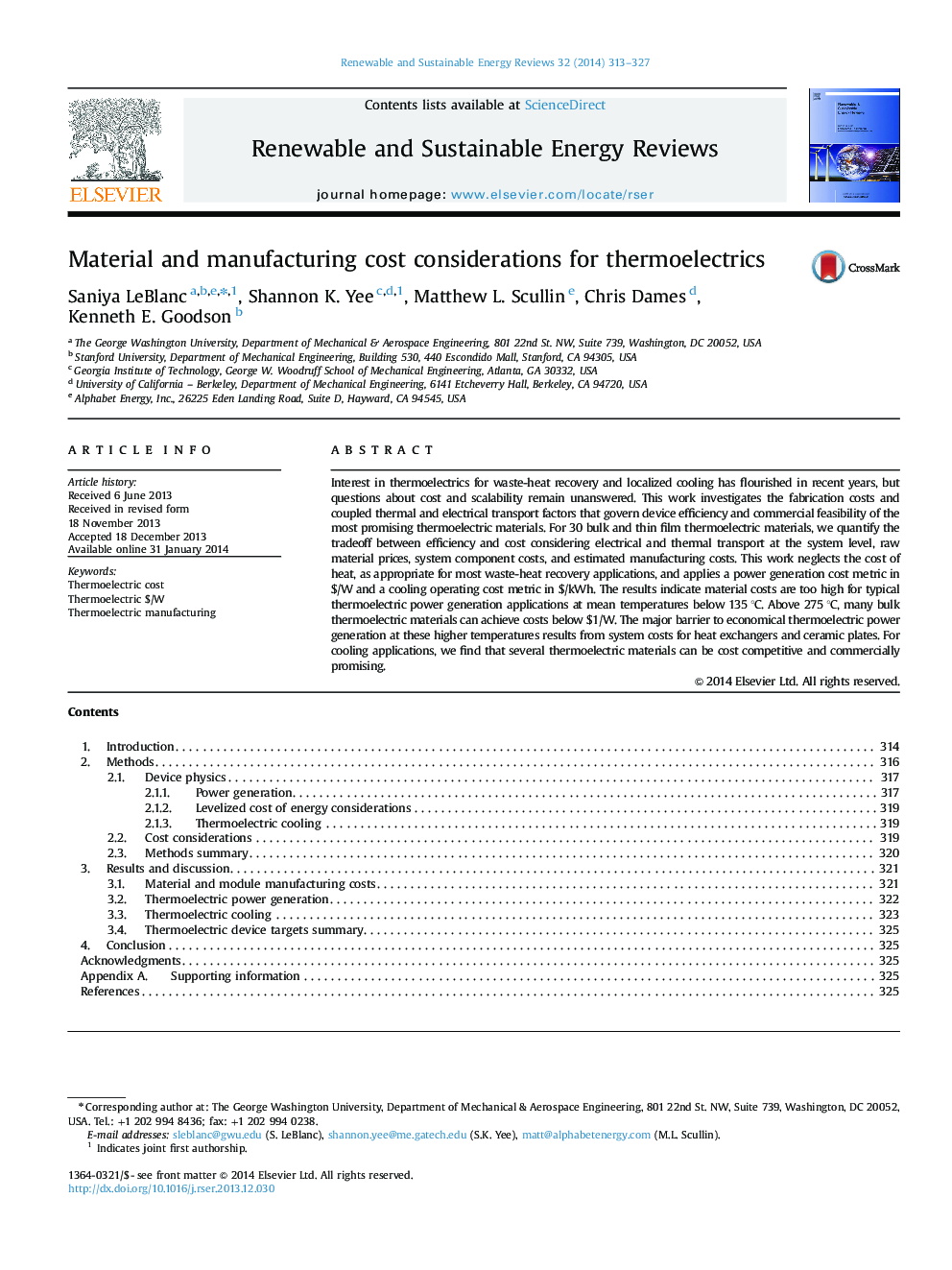| Article ID | Journal | Published Year | Pages | File Type |
|---|---|---|---|---|
| 8120168 | Renewable and Sustainable Energy Reviews | 2014 | 15 Pages |
Abstract
Interest in thermoelectrics for waste-heat recovery and localized cooling has flourished in recent years, but questions about cost and scalability remain unanswered. This work investigates the fabrication costs and coupled thermal and electrical transport factors that govern device efficiency and commercial feasibility of the most promising thermoelectric materials. For 30 bulk and thin film thermoelectric materials, we quantify the tradeoff between efficiency and cost considering electrical and thermal transport at the system level, raw material prices, system component costs, and estimated manufacturing costs. This work neglects the cost of heat, as appropriate for most waste-heat recovery applications, and applies a power generation cost metric in $/W and a cooling operating cost metric in $/kWh. The results indicate material costs are too high for typical thermoelectric power generation applications at mean temperatures below 135 °C. Above 275 °C, many bulk thermoelectric materials can achieve costs below $1/W. The major barrier to economical thermoelectric power generation at these higher temperatures results from system costs for heat exchangers and ceramic plates. For cooling applications, we find that several thermoelectric materials can be cost competitive and commercially promising.
Related Topics
Physical Sciences and Engineering
Energy
Renewable Energy, Sustainability and the Environment
Authors
Saniya LeBlanc, Shannon K. Yee, Matthew L. Scullin, Chris Dames, Kenneth E. Goodson,
